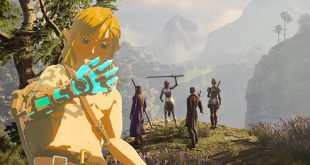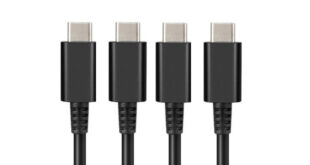It is inevitable that there will be a smartphone game that will generate $10bn in the West.
That’s the prediction of N3twork’s Neil Young, the former EA exec who set up Ngmoco and sold it to Japanese mobile giant DeNA for $400m.
Young is a video games development veteran and a highly analytical mobile expert. He says that the number of smartphones being sold is unlikely to rise significantly, but that the amount of money people are spending on free-to-play mobile games will increase by more than ten times its current rate. Currently, the average free-to-play game (out of the Top 100 grossing apps in the US) generates just 9 cents (6p) a day per user, while Young believes there is an opportunity for that to rise to $1 a day.
Using Japan as an example, he said smartphones in that country reached 80% of the population in 2008 – well ahead of the rest of the world. Since then, Japanese customers have increased their spending on games. Hit Japanese mobile game Puzzle and Dragons last year generated $11.89 per user, while comparative Western hit – Clash of Clans – made just $1.31 per user, according to research from SuperData.
"It is inevitable that the No.1 game is going to, at some point,
generate $8-10bn a year in revenue in the West"
Imagine if you have a Puzzle & Dragons scale product in the West, then you’d get to $10bn,” he tells MCV.
Japan has a population of 128m people, Puzzle and Dragons has been installed 35m times – so it has penetrated into about 30 per cent of the population. The population of US and Europe is about 800m – so if you have the same type of penetration that would be 240m downloads at $1 daily revenue, you will hit a pretty massive business.
My sense is that if you follow the maths it is inevitable that the No.1 game is going to, at some point, generate $8-10bn a year in revenue in the West. All that is really required for that to happen is for the West to make the same type of transition as we have seen in Japan – in fact, not even to that degree. I think that will come from a blend of broadly appealing game design and really smart use of game systems that allow that game design to be well monetised.”
In his talk at Develop In Brighton, Young detailed how developers can ensure its games have a ‘higher life-time value’. He said:
– Creators must make a good game and deeply understand the various freemium tactics available to them.
– Make mobile quality games, not console quality titles. Graphically intensive games can slow down mobile titles, which will hurt your game’s long-term potential.
– Make the game deep, if you want a higher paying audience you have to offer depth to the gameplay.
– Hire event managers to run regular in-game events in order to keep players engaged.
– Keep updating your game and servicing it.
– Be patient. Don’t rush your game out if it’s not ready becuase you can’t win customers back. Don’t be misled into launching early, it is never worth it.
– And promote the hell out of your game. Make sure that your customer’s life-time-value (how much you expect a customer to spend on your game in total) is not higher than the cost of acquiring that customer. But nevertheless, spend money on TV, print, online, outdoor and any sort of marketing you can.
If you take Candy Crush as an example. Candy Crush is just Bejeweled with three changes,” he tells MCV after his talk.
The first is Candy, because that is a very broadly appealing concept – people like candy. The second is the addition of the map, which provides impetus or motivation for the player to move forward. And then the third is the way in which that impetus is monetised through moves and sets of objectives. If you looked at all of the games that use that system and that framework, they all pretty much monetise at the same level. They all make about 9 cents on average per user a day.
If you can change the nature of player equity – in Candy Crush, player equity is built through the map – then you can change the nature of monetisation, and the challenge then is to do that without diminishing the appeal of the underlying project. So you don’t want to make it more complicated and less appealing as a result.”
"Free-to-play systems are certainly not evil,
you can choose to use them evilly if you wanted to,
but the systems in of themselves are not evil."
Young says that the negative perception around free-to-play games can be a challenge, before adding that the game must get the balance between the science and the art just right.
I don’t think free-to-play games means building games where everyone must pay, or need to pay,” he states. You want to get to the place where people want to pay. That is the challenge. It is not easy to do. You have to start by thinking about the structure of the game in a way that allows it to become a business. And that is hard for modern developers to think through.
There is the art part of our industry, and their is the science part of our industry. I have made lots and lots of games, and even the ones that had big licences attached, I couldn’t predict if they were going to be successful. I definitely can’t predict ahead. But I do know that if you put the game together in the right way – from a science perspective – you can guarantee a certain revenue per user, in fact an even higher one that what we are seeing in the West today.
"You still have to have the art side, games design is an art and you have to have something good to create the hit. But that great work has to be built on-top of these powerful systems, and that is how you get to a $10bn game. You don’t get to that number by just building a game on top of these systems and somehow marketing your way to success. You have to have all of those things to create something very big and very powerful.
It is kind of a shame right now that if you looked at the landscape of developers, most of them are either oblivious to these systems or think these systems are evil… they certainly are not evil, you can choose to use them evilly if you wanted to, but the systems in of themselves are not evil. So developers need to challenge themselves to build great games on top of those systems in order for us to unlock the potential of the industry.”
Young dismisses the notion that mobile games are just for casual players. I know Candy Crush players that are far more hardcore than any core gamer I know,” he says. Before pointing to the recent example of Bethesda’s Fallout Shelter. That smartphone game is a tie-in to the hit PC and console franchise, Fallout, and was announced and launched at E3.
"Fallout Shelter could become a bigger
grossing title than the game it is based on."
It immediately broke into the Top 25 Free games, and then goes to No.1 over the next 48 hours – it proves that there are plenty of core gamers that play games on their phones,” he says.
The scale of the mobile business is so big that you may be able to make the argument – and I don’t know how Fallout Shelter is doing right now around the world, it’s still going strong in the US – that that game could end up being a bigger grossing title than the game it is based on.”
Young believes the $10bn game is inevitable, and the only threat to that inevitability is if mobile developers fail to push the medium forward.
Iwata-san once said that the big danger for console games is that customers become bored, because we are not pushing the boundaries or being creative enough and moving our business forward. That is the big threa

 MCV/DEVELOP News, events, research and jobs from the games industry
MCV/DEVELOP News, events, research and jobs from the games industry



